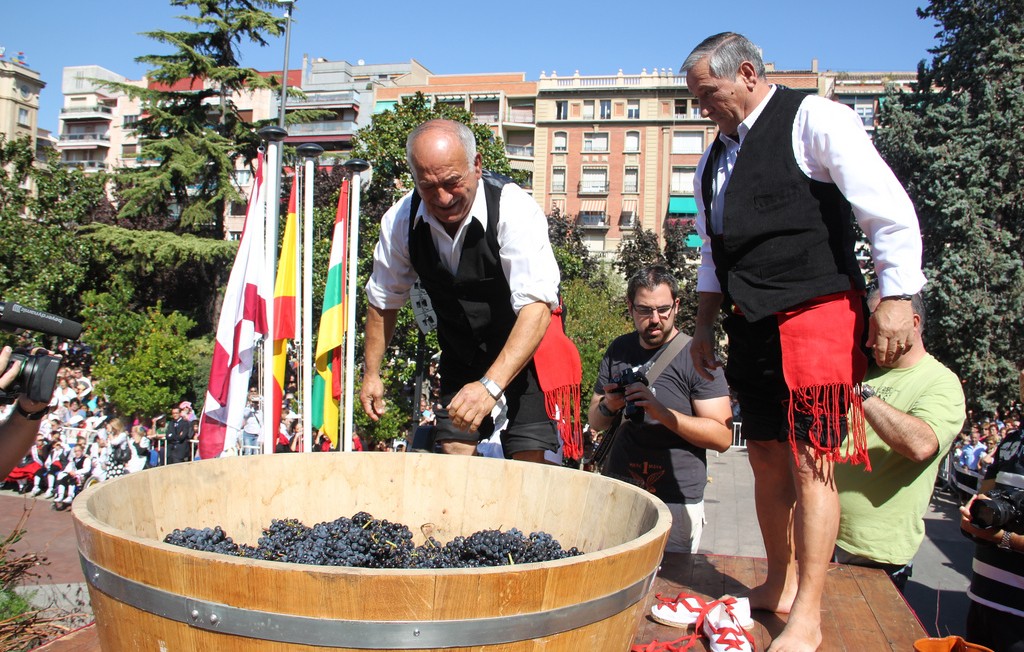Rioja is one of the more interesting wine regions in the world. The winemakers can be as individualistic – and producing in the same tiny quantities – as the Burgundians.
They had a very particular approach to wine that emerged about a hundred years ago in the post-phylloxera era, heavily influenced by French Negociants who were quietly subbing in Rioja for the missing Cabernet and Merlot. Phylloxera is a nasty fruit fly that leaves sores in the plant open to fungal infection. In the last quarter of the 1800s phylloxera and the subsequent infection devastated vitis vinifera plantings in Europe killing more than 90 per cent of the vines.) Since Franco was dumped, and with him any number of hidebound traditions, the industry has started to modernize, and even – gasp! – make wines as modern as any in the world.
[related_content slugs=”dr-booze-breaks-the-50-mark,time-for-the-dr-booze-challenge,for-new-world-drinkers-chilean-cabernet-sauvignon” description=”More from James Romanow” position=”right”]
I love the newer style Rioja, as I often found the older style required way too many decades in the bottle before theoak tannins were tamed. I do have some affection for the older style, but I will only drink it when the mood – and most importantly the company – are right. To give you some idea what I am talking about, as far as I know the oldest wine EVER released for commercial sale was a mid-1940s Rioja that was bottled and hit the market around 1980, 35 plusyears later.
Crianza is the youngest style of Rioja and with the least oaking, only one year in the barrel. So if you are like me and want a bit more fruit, Crianzas are lovely wines to pursue. They are also much less expensive due to the faster inventory turn and less time on oak.
The wines I love the most are from Rioja Alta, an area on the western edge of the region, often with vineyards in Navarra. This can be the most old fashioned of Rioja with an astringent oak edge. It can also be the most delicate of Rioja because the higher cool climate of the sub-denomination preserves the acidity and bouquet. This tension can only be resolved by the winemaker, as to the best of my knowledge you can’t really have both properties in a glass.
Marques de Caceres is an Alta producer but I have mixed feelings about their wine. They tend to stick with a quasi-Bordelais palate preference which I find with the Tempranillo grape not always pleasant.
However their Crianza is either moving with the times, or they are starting to change their barrelling regimen. (Traditionally Rioja used American and/or Spanish oak split in the French fashion rather than sawn in the American, making for a little less tannic take up. These days French oak dominates.)
Caceres has a fuller almost unctuous palate, a modern characteristic, but maintain some of the elegance of which a good Tempranillo is capable. There is a bit of floral aroma and taste but the tannins were apparent. It is however a sterner, more intellectual wine than the rest of the wines here, a rather old fashioned characteristic. In the right mood such wines are very appealing, but when you’re putting the Stones on the turntable I suspect you won’t get what you need from your glass, regardless of what you think you want.
Ibericos is an unrepentantly modern wine from Torres. Their wine was the most purple of these wines, despite the 5 year old age. A slightly herbal nose leads you into a very good dinner wine, with a thicker texture, and good tannins. This is a wine that will suit most modern drinkers who start with a glass of red as a cocktail while listening to Madonna or Sir Mix-A-Lot.
Montecillo is a new style Rioja, purple in colour with a Tempranillo bouquet: a bit of earth, and some dark fruit. It was surprisingly light, with a bright acidity. The tannins are tamed, making this perhaps the most approachable of these wines. Thing Beyonce or Lady Gaga and you’re headed for the right groove.
Solar Viejo is the youngest of these wines, a mere four years old. It was a lighter red colour with an earthy bouque. The palate was astringent with a mild acidity, tame tannins, and a mineral finish. It’s a great food wine that did just fine up against my old cheddar and capicola cracker. Justin Timberlake? Pink?
Campo Viejo – ‘Viejo’ if you’re curious means ‘old’, equivalent to the French ‘vieille’ – is like Montecillo, very bright with a crisp acidity. The tannins were a bit tougher than Montecillo but not as hard as those of an old style Rioja or a Cabernet Sauvignon. It did less well against cheese and was only okay against the capicola cracker… Gnarls Barkley!
These judgements I hasten to add are relative and subjective. Some readers will surely disagree. In general I’d probably buy Campo Viejo first followed by either the Caceres Crianza or the Ibericos depending on the meal and mood.
Marques de Caceres Crianza, Rioja, Spain, 2007. $21.81 ****
Montecillo Crianza, Rioja, Spain, 2007. $19.95 ****
Solar Viejo Crianza, Rioja, Spain, 2008. $20.30 ****
Campo Viejo Crianza, Rioja, Spain, 2007. $19.29 ****
Ibericos Crianza, Rioja, Spain, 2007. $20.25 ****
—
James Romanow writes about Wine and all things Boozy for the Spectator Tribune. Follow him @drbooze.
